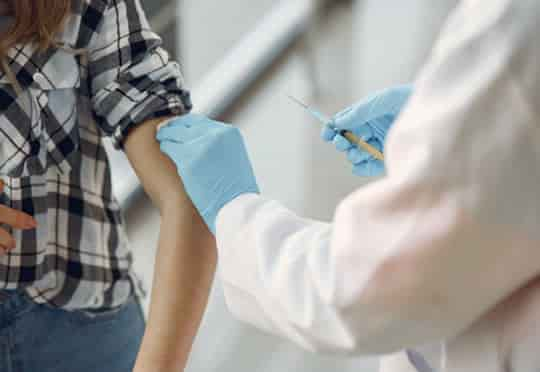People can experience symptoms like COVID-19 after receiving the Pfizer vaccine.
The adverse effects of Pfizer’s coronavirus vaccine shouldn’t be disregarded despite the vaccine being generally well-tolerated.
People could experience similar symptoms to COVID-19 such as:
- feeling nauseous,
- dizzy,
- chilled,
- having a headache,
- soreness and extreme muscle pain at the injection site,
- and fever of 105°F (40.5 °C).
Swelling at the injection site after the first jab seems to be common as it was also reported in the Pfizer-BioNTech phase 1 COVID-19 vaccine clinical trial.
According to data from Pfizer’s coronavirus vaccine trial, after the second dose of BNT162b2 (the COVID-19 vaccine by Pfizer-BioNTech):
- 75 percent of participants aged between 18 and 55 had fatigue,
- 67 percent headache,
- 33 percent chills,
- 25 percent muscle pain,
- and 17 percent fever.
Side-effects are sign of normal response
Dr Kristen Choi, an assistant professor in the School of Nursing at UCLA, who participated in Pfizer’s coronavirus vaccine trial published her experience.
After the first shot, her arm was sore but she didn’t experience anything unusual.
However, her body reacted strongly after the second dose:
“My arm quickly became painful at the injection site, much more than the first time.
By the end of the day, I felt light-headed, chilled, nauseous, and had a splitting headache.
I went to bed early and fell asleep immediately.
Around midnight, I woke up feeling worse—feverish and chilled, nauseated, dizzy, and hardly able to lift my arm from muscle pain at the injection site.
At 5:30 am, I felt hot.
Burning.
I took my temperature and looked at the reading: 104.9 °F (40.5 °C).
This was the highest fever I can ever remember having, and it scared me.”
The next day she called the research office and was told that many people have reactions after receiving the second shot.
She was advised to monitor her symptoms and give them a call should anything change.
By the next day her symptoms were gone, except for the soreness and swelling at the injection site.
She explains that the side-effects are normal signs showing the effective immune response to the vaccine.
She added:
“Despite the extensive information I had on the research process and vaccine, on a personal level I did not get the message that I should anticipate a reactogenic response.
I was scared when I saw that I had a fever, and my gut reaction after months of scrutinizing myself for all the possible COVID-19 symptoms was: Do I have COVID-19?”
She concludes that practitioners should discuss the possible side-effects with patients and let them know that the reaction to the vaccine could look like the coronavirus symptoms.
This information will help people to overcome fear of vaccination.
The report was published in the journal JAMA Internal Medicine (Kristen Choi, 2020).

